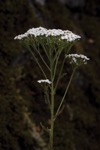Notice (8): Undefined index: geoplugin_countryCode [APP/Controller/AppController.php, line 94]Code Context$Country_code = '';if($ip_data && $ip_data['geoplugin_countryCode'] != null) {$Country_code = $ip_data['geoplugin_countryCode'];$client = null $forward = null $remote = '216.73.216.24' $ip = '216.73.216.24' $ch = unknown $ip_data_in = '{ "geoplugin_status":429, "geoplugin_message": "Blacklisted due to sending too many requests to geoplugin.net. Consider whitelisting your IP or domain", "geoplugin_url": "https://www.geoplugin.com/premium/" } ' $ip_data = [ 'geoplugin_status' => '429', 'geoplugin_message' => 'Blacklisted due to sending too many requests to geoplugin.net. Consider whitelisting your IP or domain', 'geoplugin_url' => 'https://www.geoplugin.com/premium/' ] $Country_code = ''App\Controller\AppController::initialize() - APP/Controller/AppController.php, line 94 App\Controller\ProductsController::initialize() - APP/Controller/ProductsController.php, line 31 Cake\Controller\Controller::__construct() - CORE/src/Controller/Controller.php, line 273 ReflectionClass::newInstance() - [internal], line ?? Cake\Http\ControllerFactory::create() - CORE/src/Http/ControllerFactory.php, line 47 Cake\Http\ActionDispatcher::dispatch() - CORE/src/Http/ActionDispatcher.php, line 91 Cake\Http\BaseApplication::__invoke() - CORE/src/Http/BaseApplication.php, line 235 Cake\Http\Runner::__invoke() - CORE/src/Http/Runner.php, line 65 Cake\Http\Runner::__invoke() - CORE/src/Http/Runner.php, line 65 Cake\Http\Middleware\CsrfProtectionMiddleware::__invoke() - CORE/src/Http/Middleware/CsrfProtectionMiddleware.php, line 104 Cake\Http\Runner::__invoke() - CORE/src/Http/Runner.php, line 65 Cake\Http\Runner::run() - CORE/src/Http/Runner.php, line 51 Cake\Routing\Middleware\RoutingMiddleware::__invoke() - CORE/src/Routing/Middleware/RoutingMiddleware.php, line 168 Cake\Http\Runner::__invoke() - CORE/src/Http/Runner.php, line 65 Cake\Routing\Middleware\AssetMiddleware::__invoke() - CORE/src/Routing/Middleware/AssetMiddleware.php, line 88 Cake\Http\Runner::__invoke() - CORE/src/Http/Runner.php, line 65 Cake\Error\Middleware\ErrorHandlerMiddleware::__invoke() - CORE/src/Error/Middleware/ErrorHandlerMiddleware.php, line 96
| Scientific: | Achillea millefolium |
|---|---|
| Other: | Yarrow |
| Family: | Asteraceae |
Yarrow grows in the northern hemisphere, and since ancient times it has been used in traditional medical systems of Asia, Europe, and North America. Western herbalists recommend yarrow primarily for indigestion associated with heaviness, cramping, and gas. This bitter and aromatic tasting herb stimulates digestion and relieves cramping of smooth muscles. Its antispasmodic effects extend to the pelvic region where it’s often used to relieve menstrual cramps.
As a first aid remedy, yarrow is valued for its astringent and vulnerary properties to help heal wounds both internally and topically. The Ancient Greeks applied yarrow to injuries on the battlefield to arrest bleeding and heal wounds. The First Nations people in North America applied it topically to bruises and strains, and the tea was consumed as a diaphoretic remedy to treat fevers and colds.
Gastrointestinal
• digestive complaints
- dyspepsia
- colic
• inflammation of the mucous membranes
- gastric ulcer
- gastritis
- colitis
• sitz bath for hemorrhoids
Respiratory
• upper respiratory tract infections
- colds
- influenza
Urinary
• urinary tract infections (UTI)
• hematuria
Cardiovascular
• hypertension
• atherosclerosis
Dermatologic
• bleeding wounds (topical application)
• leishmaniasis
Gynecological
• atonic menstrual complaints
- dysmenorrhea
- menorrhagia
- leukorrhoea
• Bitter
• Vulnerary
• Diaphoretic
• Antispasmodic
• Astringent
• Carminative
• Antiviral
• Diuretic
• Antiinflammatory
• Antiulcerogenic
• Antihypertensive
• Volatile Oils (Azulene, Chamazulene)
• Sesquiterpene Lactones (Achillicin)
• Flavonoids
• Bitters
• Alkaloids
• Tannins
• Coumarin
• Tincture (1:5 of flower in 40% EtOH): 2-4 ml tid
• Fluid extract (1:1 of flower in 25% EtOH): 1-2 ml tid
• Infusion (dried flower): 2-4g tsp tid
- Generally considered safe when used as indicated.
Contra-Indications:
• Asteraceae allergy: contains sesquiterpene lactones
Pregnancy & Lactaction:
- Iron supplements • may reduce the absorption of non-heme iron. Take iron supplements a few hours apart.
Barnes J, Anderson LA, Phillipson JD. Herbal Medicines, 3rd ed. London: Pharmaceutical Press, 2007.
Bone K. Principles and Practice of Phytotherapy. Edinburgh: Churchill Livingstone, 2000.
Bone K. A Clinical Guide to Blending Liquid Herbs: Herbal Formulations for the Individual Patient. St Louis, MO: Churchill Livingstone, 2003.
Brinker F. The Toxicology of Botanical Medicines, 3rd ed. Sandy, Oregon: Eclectic Medical Publications, 2000.
Felter HW, Lloyd JU. King's American Dispensatory. 1898. http://www.ibiblio.org/herbmed/eclectic/kings/main.html. Accessed: August 19, 2006.
Hoffman D. Medical Herbalism. Rochester, Vermont: Healing Arts Press, 2003.
Weiss RF. Herbal Medicine. Beaconsfield, England: Beaconsfield Publishers Ltd, 1988.
Williamson EM, ed. Major Herbs of Ayurveda. Edinburgh: Churchill Livingstone, 2002
Disclaimer: This content is subject to change. The information is intended to inform and educate; it does not replace the medical evaluation, advice, diagnosis or treatment by a healthcare professional. www.nhpassist.com © 2014 NDAssist Inc. and/or its affiliates. All rights reserved.

|
Yarrow
SummaryYarrow grows in the northern hemisphere, and since ancient times it has been used in traditional medical systems of Asia, Europe, and North America. Western herbalists recommend yarrow primarily for indigestion associated with heaviness, cramping, and gas. This bitter and aromatic tasting herb stimulates digestion and relieves cramping of smooth muscles. Its antispasmodic effects extend to the pelvic region where it’s often used to relieve menstrual cramps. IndicationsSign in requiredActionsSign in requiredConstituentsSign in requiredPosologySign in requiredSafetySign in requiredInteractionsSign in requiredReferencesSign in required |
|---|